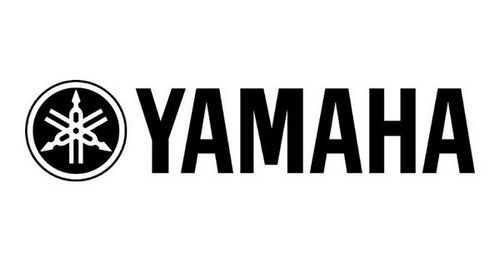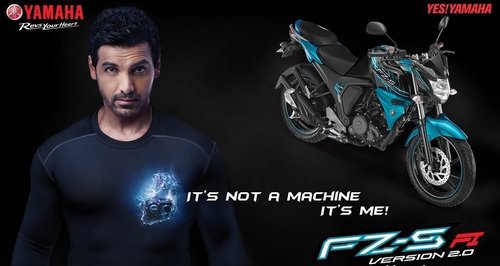The Marketing mix of Yamaha analyses the 4Ps of Yamaha, including the Product, Price, Place, and Promotions. Yamaha is one of the world’s most renowned Motorcycle manufacturing companies, with its product mix comprising various other products. Founded in 1887, Yamaha Motor has a pervasive network comprising at least 140 subsidiaries and affiliates for manufacturing and selling Yamaha products worldwide. Having been founded by Torakusu Yamaha, the company is today headquartered in Hamamatsu Shizuoka, Japan, and employs at least 20,000 people worldwide.
Competitors
- Ducati Superbike
- Bajaj Auto Limited
- Kawasaki Heavy Industries Limited
- Hero Motor Corp (Hero Honda)
- Suzuki Motor Corporation
- TVS
- Harley Davidson
- Honda Motor Co
- Royal Enfield
About Yamaha
- Type: Manufacturing Company
- Industry: Motorcycles, industrial robots, and musical instruments Manufacturing Company
- Founded: 1955
- Founder: Late Genichi Kawakami
- Headquarters: Iwata, Shizuoka, Japan
- Area served: Worldwide
- Key people: Yoshihiro Hidaka, President and CEO
- Number of employees: Over 75,000
Table of Contents
Yamaha Product Strategy
The company is well known for its machinery production and as a global leading motorcycle manufacturer. Other than motorcycles, other products within its product line include four-wheel ATVs. Scooters, racing & golf carts, leisure & fishing boats, electric hybrid bicycles, robots, electric wheelchairs, snowmobiles, helicopter drones for agricultural spraying, engines, and other machinery.
Yamaha has about 15% of the USA market share, with overseas markets accounting for about 90% of sales. In total, about 70% of all the company’s sales are from motorcycles. Yamaha motorcycle product brands include the Yamaha VMAX, the Yamaha Crux, The Yamaha RI, the Yamaha FZ, and the Yamaha YBR. Other predominant products in multinational companies, in addition to motorcycles, include power sports equipment, musical instruments, and electronics. It is the largest manufacturer of pianos in the world and is a principal Nikkei 225 constituent.
Yamaha has a diverse product mix extends across several industries, primarily known for its musical instruments and motor vehicles.
The new Product Mix of Yamaha in 2023 is as follows (Source).
- Musical Instruments: Yamaha is one of the world’s largest manufacturers of musical instruments. Their product range includes pianos (grand, upright, digital, and hybrid), keyboard instruments (synthesizers, workstations, and arrangers), string instruments (violins, violas, cellos, and basses), wind instruments (saxophones, clarinets, flutes, recorders), brass instruments (trumpets, trombones, horn), percussion (drums, marching instruments, concert percussion), and guitars (acoustic, electric, bass).
- Audio Equipment: This includes professional audio equipment like mixers, speakers, amplifiers, and studio monitors. Yamaha also produces consumer audio products like home theater systems, Hi-Fi components, and soundbars.
- Motorcycles and Scooters: Yamaha is a major player in the motorcycle market, offering a wide range of motorcycles, from high-performance sports bikes to cruisers and scooters. Their products cater to various market segments and rider preferences.
- Marine Products: The company manufactures marine engines, including outboard motors for boats, and also produces a range of vessels, including fishing boats, wakeboard boats, and personal watercraft (like jet skis).
- Power Products: This includes generators, water pumps, and snow throwers, catering to both personal and industrial needs for power supply and maintenance.
- Golf Cars: Yamaha produces golf cars and utility vehicles used in golf courses and for various purposes.
- Uncrewed Aerial Vehicles (UAVs): Yamaha has ventured into the production of drones, particularly for agricultural use, like crop dusting and remote monitoring.
- Automotive Engines: They manufacture car engines and components and are involved in developing electric power units for vehicles.
- Semiconductors: Yamaha has a division that produces and sells semiconductors, which are used in a variety of electronic devices.
Yamaha Place Strategy
Yamaha mainly targets middle-class people looking for something stylish, offering a good mileage guarantee that will not break the bank. It also targets youths in the 25-35 year bracket. Fortunately, the most significant part of the population today comprises the middle class, with the youth age group also a target market, taking an extraordinary claim of the population.
The company has one of the most excellent advertisements, branding, global distribution, and promotion strategies that have enabled it to be present in almost all the countries in the world. Yamaha’s presence in a competitive market is well felt mainly in the North American continent, Europe, and Asia, especially Japan. Its presence in Africa is not as formidable but very considerable.
Yamaha’s products are available in several subsidiaries with some of its groups including Yamaha Fine Technologies Co Ltd, Yamaha Pro Audio, Yamaha Golf Cart Company, Yamaha Music Communications Company Ltd, Yamaha Motor Company, Yamaha Metanic Corporation, and Yamaha Livingtec Corporation, etc.
Here’s the place Strategy of Yamaha.
- Global Distribution Network: Yamaha has established a vast global distribution network, including manufacturing facilities, sales offices, and distribution centers across critical markets worldwide. This extensive network enables efficient product distribution and availability in various regions, catering to a diverse global customer base.
- Dealership and Retail Partnerships: Yamaha relies heavily on a network of authorized dealerships and retail partners to sell its products, particularly for its vehicles and musical instruments. These dealerships are carefully selected to ensure they meet Yamaha’s customer service and product knowledge standards.
- Online Sales Platforms: Recognizing the shift towards digital commerce, Yamaha offers many of its products through online platforms. This approach complements their physical sales channels and caters to the growing number of consumers who prefer shopping online.
- Specialized Showrooms and Experience Centers: For certain products, especially premium musical instruments and high-end motorcycles, Yamaha operates exclusive showrooms and experience centers. These venues allow customers to experience products firsthand and receive expert guidance.
- Strategic Location in Urban and Commercial Areas: Yamaha’s showrooms and dealerships are often strategically located in urban and commercial areas to maximize foot traffic and visibility. This is particularly important for products like motorcycles and musical instruments, where in-person experience and brand visibility play crucial roles in consumer decision-making.
Yamaha Pricing Strategy
Yamaha employs a competitive price strategy for its products. This is not at the expense of quality. Yamaha products have the best price-to-performance ratios in the world. The product price difference is based on the market leader, product’s power, and type. With the pricing, some unique financing options are offered, thus psyching people to buy Yamaha.
Yamaha’s pricing and marketing strategy is a well-orchestrated blend of market positioning, product value, and competitive dynamics, reflecting its status as a leader in diverse industries. Here’s an in-depth look at their approach:
- Value-Based Pricing: Central to Yamaha’s pricing strategy is the value-based approach. Yamaha sets prices based on the product’s intrinsic value to the customer, including factors like quality, durability, technology, and brand prestige. This is particularly evident in their musical instruments and high-end motorcycles.
- Competitive Pricing: In highly competitive markets, such as motor vehicles and consumer audio equipment, Yamaha employs a competitive pricing strategy. They benchmark their prices against competitors while ensuring their products offer additional value in quality, features, or brand reputation.
- Premium Pricing for High-End Products: Yamaha adopts a premium pricing strategy for its high-end products, like grand pianos and performance motorcycles. These products are positioned as luxury items, and their pricing reflects their superior quality, advanced technology, and the prestige associated with the Yamaha brand.
- Segmented Pricing: Yamaha’s diverse product range allows for segmented pricing. Different product lines and models are priced differently to cater to various customer segments, from entry-level to professional-grade products, ensuring a broad market appeal.
- Promotional and Seasonal Pricing: Yamaha utilizes promotional pricing, including discounts, financing options, and seasonal sales, to drive sales and attract customers. This is especially common in consumer-focused segments like audio equipment and motorcycles.
- Geographical Pricing Variations: Given its global presence, Yamaha’s pricing strategy considers geographical variations. Prices may vary based on local market conditions, taxes, import duties, and currency exchange rates.
- Price Skimming for New Innovations: Yamaha sometimes uses a price skimming strategy for newly launched products with significant innovations or advancements. They initially set higher prices to maximize returns from early adopters willing to pay more for the latest technology, followed by gradual price reductions.
Yamaha’s pricing strategy reflects its dual focus on maintaining a competitive edge in the market while upholding the value and prestige of its brand. It is a key component of Yamaha’s broader business strategy, aiming to appeal to a diverse customer base across its varied product lines and services.
Yamaha Promotion Strategy
Yamaha has a heart-touching tagline: “Yes Yamaha; Touching your heart.” This is one of the aspects of the company’s promotion mix that has been able to attract a lot of potential customers. Its dedication to producing competitive products for globally visible activities such as motorsports has enabled it to cut an edge for itself. The World Superbike and the MotoGP are trendy brands within these sporting activities, thus helping the company in their promotion mix.
Yamaha is involved in corporate missions that strive to ensure society is emotionally moved and touched by its CSR activities. Its Yamaha Music Foundation has also given back to the community by promoting music popularisation and music education in Japan since 1966. To advance its course, Yamaha has been involved in sports with the Jubilo Iwata Football team and the Yamaha Jubilo Rugby team.
Some Recent Video ads and Print ads for Yamaha are:
Liked this post? Check out the complete series on Marketing Mix


hi, I just wanted to know which source you used to find the target market of Yamaha motors?
Hi. The target market is quite obvious based on the price and the design of the model. Didnt need any research.
What marketing strategy of YAMAHA?
Does India Yamaha Motor Pvt. Ltd. follow any Business Marketing strategy in B2B market?
Do you know which is Yamaha Motors least performing (financially as well as demand wise) product line?